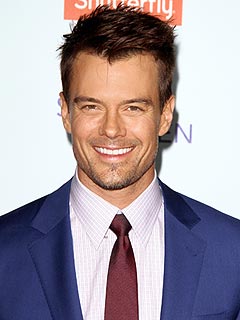ROME — The food rations and medical supplies that Secretary of State John Kerry said Thursday would be provided to the Free Syrian Army mark the first time that the United States has publicly committed itself to sending nonlethal aid to the armed factions that are battling President Bashar al-Assad.
But the nature of the assistance also illustrates the Obama administration’s caution about getting involved in the Syrian crisis.
At each stop of his first foreign trip as secretary of state, Mr. Kerry has emphasized that one of his principal goals was to change Mr. Assad’s calculations about his ability to remain in power.
Mr. Assad is “out of time and must be out of power,” Mr. Kerry asserted after meeting here with Moaz al-Khatib, the leader of the Syrian opposition coalition.
The announcement of the supplies fell well short of the weapons and equipment Syrian rebels have requested and left unclear why Mr. Assad, who has fired Scud missiles at the city of Aleppo, would now conclude that he could no longer stand up to his opponents.
The nonlethal aid was just one element of the American program of assistance that Mr. Kerry unveiled on Thursday.
The United States is also providing $60 million to help the political wing of the Syrian anti-Assad coalition improve the delivery of basic services like sanitation and education in areas it has already wrested from the government’s control.
A covert effort to program to train rebel fighters, which State Department officials here were not prepared to discuss, has also been under way. According to an official in Washington, who asked not to be identified, the Central Intelligence Agency since last year has been training groups of Syrian rebels in Jordan.
The official did not provide details about the training or what difference it may have made on the battlefield, but said that the C.I.A. had not given weapons or ammunition to the rebels. An agency spokesman declined to comment.
Defending the limited program to provide medical supplies and military rations known as Meals Ready to Eat, or M.R.E.’s, to the military wing of the Syrian resistance, Mr. Kerry said that other countries would also provide help. He said that the “totality” of the effort would make an impression on Mr. Assad.
“We’re doing this, but other countries are doing other things,” Mr. Kerry said. But neither he nor any diplomats at a meeting here of the so-called Friends of Syria countries that support the Syrian resistance provided details about that effort.
Britain is planning more substantial nonlethal aid, which could include vehicles, bulletproof vests and night vision equipment, according to an American official. British officials have been consulting with European counterparts about what sort of nonlethal aid might be allowed under the terms of European Union decisions.
There is speculation that the Obama administration might expand its program of support to the Free Syrian Army to include nonlethal equipment if rebel fighters use the initial assistance effectively and do not allow any to fall into the hands of extremists.
“We’re in the Middle East. It’s all about the bargaining,” said Mona Yacoubian, a Middle East expert at the Henry L. Stimson Center in Washington. “It could be this is part of a strategy of deliberately trickling in aid, to sort of see how things are going on the ground. You start with harmless things, like M.R.E.’s. Is this a conversation starter? We might think of it that way.”
But Mr. Kerry provided no indication that the White House was committed to such a phased expansion of nonlethal support.
“I am going back to Washington with a number of thoughts and ideas that were put on the table today, and I’m confident we’re going to have a robust and ongoing conversation,” he said.
Some members of the Syria opposition said they were disappointed by the Rome session.
“It is obvious that the real support is absent,” said Walid al-Bunni, a spokesman for the anti-Assad coalition. He said what the resistance needed most was weapons. “What we want is to stop the Scuds launched on Aleppo, to stop the warplanes that are bombing our towns and villages.”
Mr. Khatib, for his part, delivered an emotional statement in which he urged establishment of a humanitarian corridor to the besieged city of Homs, and complained that many in the West were too quick to judge some members of the opposition as Islamic extremists because of “the length of a beard of a fighter.”
“Bashar Assad, for once in your life, behave as a human being,” Mr. Khatib said. “Bashar Assad, you have to make at least one wise decision in your life for the future of your country.”
One aim of the $60 million in aid is to help the Syrian Opposition Coalition, the umbrella group led by Mr. Khatib that the United States backs and has helped shape, in building credibility within the country and contesting the influence of extremist groups like the Al Nusra Front, an organization affiliated with Al Qaeda.
American officials have become increasingly concerned that the Al Nusra Front is making inroads among the Syrian population by dispersing assistance in the areas it controls.
The American assistance could also help the Syrian coalition develop the governance skills it will need to play a role in any post-Assad political transition.
The funds are to be used in areas controlled by the Syrian opposition coalition to improve education, sanitation and security. Another goal is to strengthen the rule of law in these areas and discourage vigilante justice or revenge killings. To carry out the program, the United States plans to send technical advisers to the headquarters of the Syrian opposition in Cairo. The advisers will be drawn from nongovernmental organizations.
The $60 million is on top of more than $50 million in assistance, including communications equipment, that the United States has already provided to local councils and civil activists. The new funds need to be approved by Congress, which is caught up in politics over how to cut the American budget deficit. But Mr. Kerry said that he expects Congressional approval soon.












